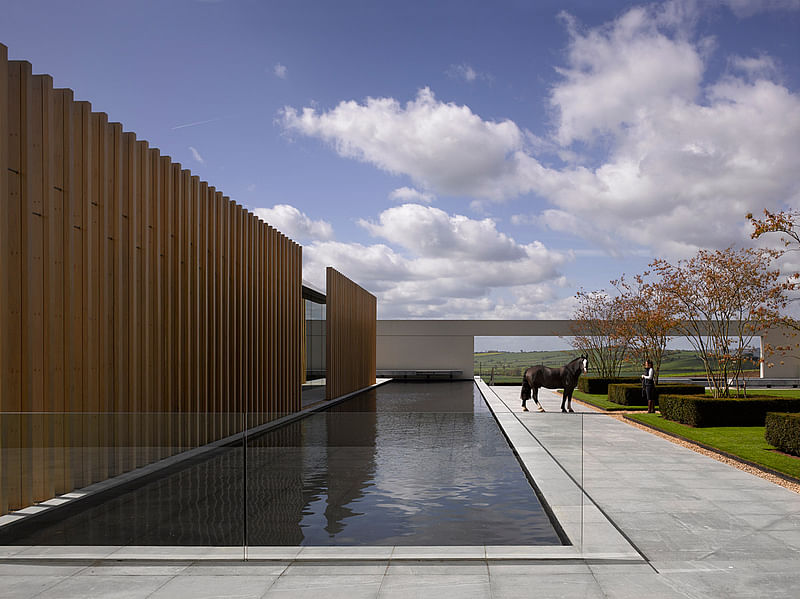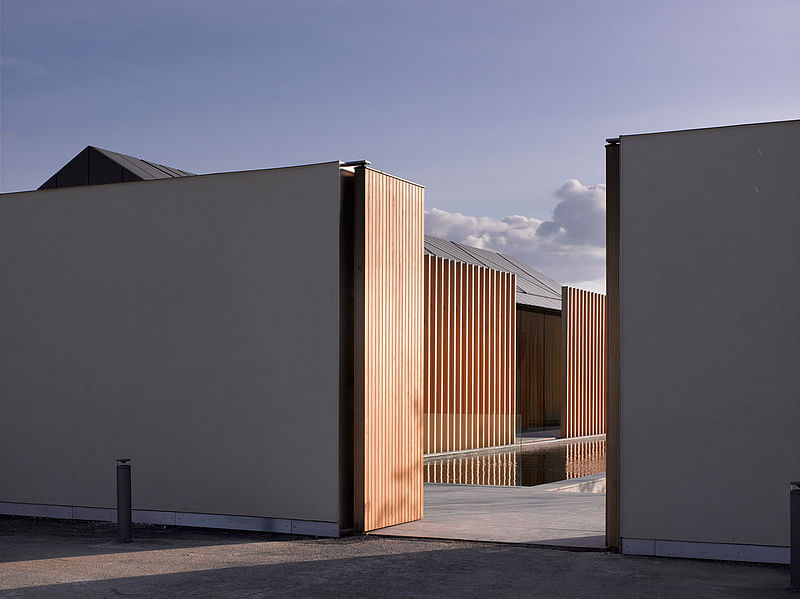RIBA Award Winner Windmill Hill Launches in June
By Bustler Editors|
Friday, Jun 10, 2011

Related
June 2011 sees the launch of Windmill Hill, a new building complex on the Waddesdon Estate, northwest of London, that will serve as a research and archive center for Waddesdon and a home for the philanthropic work of the Rothschild Foundation. Designed by Stephen Marshall Architects, Windmill Hill had just been recognized for its architectural excellence with a RIBA award (previously on Bustler) and will open to the public on June 18.
Since the 19th century, the Rothschild family has been committed to a long distinguished tradition of philanthropy. The creation of Windmill Hill is an extension of this commitment, as it will house the Manor, Estate and Family Archives, including the personal papers of the Rothschilds who have been responsible for Waddesdon. The intention is for Windmill Hill to become a principle centre for study, research and outreach in the fields that Waddesdon represents: the arts, heritage, culture, conservation, the environment and horticulture.

Project Description from the Architects:
The site was previously a dairy farm, and the layout of the new scheme broadly follows the footprint of the farm buildings, and where possible has re-used them. There are strong references to the agricultural past through the groupings of the buildings around a courtyard, with the Reading Room and archive stores on one side and the Rothschild Foundation on the other, and through the materials chosen – notably oak windows and shutters, rendered walls, wood cladding and zinc roofs. Vertical louvers provide a strong visual and practical feature. Historically, these protected cattle sheds from wind while allowing fresh air to circulate. Now they shield the Reading Room from excess direct light. Environmental considerations have been a priority in the building design.

Heating is provided by ground source heat pumps, driven by heat piles and the archive store is one of Britain’s largest naturally cooled such spaces, with walls 1.5 m thick that create a stable internal environment. Additionally, a greywater recycling system with 99% UV protection prevents solar glare and heating.
The site benefits from gloriously unspoiled views that Stephen Marshall Architects’ design frames, captures and emphasises wherever possible, with the landscaping adapted to form a “cradle” for the new project.

The three activities - archive space and reading room, offices for archive staff and the archive stores themselves - are formed around three sides of a sloping garden with the fourth side open to the south. The dramatic western view in particular is framed within a large opening defined by a 25m beam. Even the approach road has been diverted to give distant views of the Manor. The courtyard to the south of the Reading Room is formed as a continuous rolling grass surface which draws the eye to the landscape beyond and can be used as an extension of the room in fine weather.

The entry courtyard is a key element of the complex, uniting the buildings, but also, through its formal landscaped garden, providing a suitably emphatic point of arrival for the whole project. Stephen Marshall Architects have conceived it as a large outdoor room, a minimal space that over time will house sculpture and rare planting. Reflective pools run the length of the west and east sides of the courtyard and enhance the serenity of the space.

The supporting office spaces are within a two-storey space on the north side of the courtyard garden, opposite the reading room and archive store. The buildings echo each other in external form, but the reading room is a double height, single storey space. Simplicity is key to the design, so lights are recessed out of view into oak gridshell roofs in the reading room and gallery and the buildings are heated from below. Classic modern furniture has been used, primarily Charles Eames and Vitra, while the reading room tables, designed by Stephen Marshall Architects, are formed from large, cantilevered slabs of oak.

Stephen Marshall says: “It has been a privilege, to work with such a stunningly beautiful site and to be able to make formal planted courtyards within the bigger Waddesdon landscape. Everyone was a joy to work with and Lord Rothschild was highly supportive in getting the building, with its innovative structure, built. As architects we always think at this stage the building is finished, but of course as people, furniture and objects of art move in, it is very much the beginning of life for the Windmill Hill building”.

Pippa Shirley, Head of Collections at Waddesdon Manor, says “this has been an incredibly rare and exciting opportunity to create, from scratch, a contemporary archive which will not only preserve the collections in the best conditions, but provide access to them in a setting which has been assembled with as much of an eye for beauty, comfort and landscape as Baron Ferdinand brought to the creation of Waddesdon Manor itself”.






Share
0 Comments
Comment as :